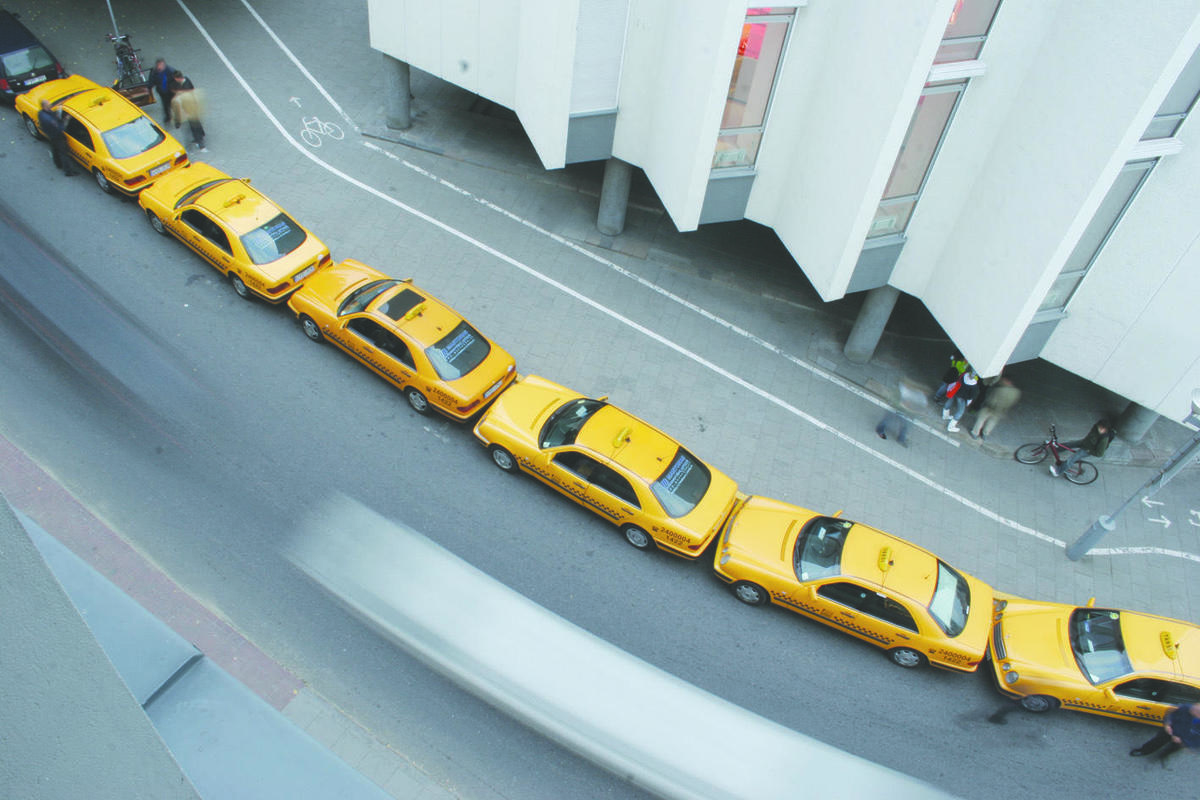
Vilnius / London
Baltic Triennial 33 ½
CAC Vilnius
September 23–November 20 2005
ICA London
October 1-2 2005
Currently circulating: the urban myth about the film critic who is no longer of fixed abode. He travels the world from film festival to festival, and has so far amassed one year of living on the hop. “Only one year!” many in the art world might sigh, for between the biennials, the triennials, the quinquennials — not to mention the art fairs — there is every likelihood you could float around for much longer than that.
“Black Market Worlds,” the IX Baltic Triennial, took a position against the itinerant’s ennui by hyperextending itself across the European continent and beyond. In addition to the exhibition at the CAC Vilnius and a website (ultimiere.com), the opening was purportedly celebrated, as reported by Judicael Lavrador, by “the entire company of contemporary art jet setters” on a flight between the Lyon and Istanbul Biennials, and the show was taken on the road to London for 33 ½ hours at the ICA. The Baltic’s neither-nor geopolitical position, linking East and West was thus the starting point for this concept of site-flexibility, not site-specificity.
In keeping with the themes addressed by its title, Section 33 ½ functioned a little like a trade fair booth. “Booth Vilnius” at the “London Expo” was a promotional shadow of its triennial self: monitors showing the CACTV archives; a projection of Les Vampires; a framed copy of Pablo Leon de la Barra’s visa stamp, which had expired that day; and trestle tables loaded with posters, flyers, foldouts and press releases. In one corner Michael Zheng, posing as a black market bootlegger, sold copies of some of the works on view at the CAC. This self-critical move of giving piracy institutional legitimacy (and vice versa) was evinced elsewhere, including in the exhibition’s title, which was abbreviated to bmw. (One of the questions in bmw’s press release: “Didn’t Sony express any discontent with the fact that Soni and Shanel had their ads in the publication of the triennial?”)
This trade fair booth took other contrary positions. For example, 33 1/2’s propaganda was (intentionally) more effective at obfuscating information than disseminating it. Things happened but when, and what kind of things, was flexible. According to Raimundas Malasauskas, who, along with Alexis Vaillant and Sofia Hernandez, was one of the triennial’s three curators, the intent behind the London cameo was to disappear “as fast as possible.” Hence a couple of red herrings in the cryptic press releases, the most confounding of which was the announcement that the ICA would open at 10 as opposed to the usual noon. This strategy of deliberate misinformation did confront the issue of institutional reliability and complicity, although the questioning unfortunately came at the cost of a few extra hours’ sleep.

Most of the time the affair was a laid-back shambles which could at any moment deteriorate into a student party in the lull after fresher’s week. This unpretentious shambles was a refreshing change from the institutional machine’s norm. There were some very dull talks, including Londoner David Ellis’s rambling chronicle on venturing into Lithuania to rediscover his Lithuanian roots, which he ended with an unselfconsciously bad video meditation on the journey, but there were also moments that did successfully illustrate bmw’s unconventional curatorial strategies, such as the PB8 taxi concert. Six black London cabs rolled up outside the ICA on the Mall only to be asked to move along by the police; they drove round to the ICA’s offices and lined up in a rather grand parking lot (numerous “reserved” plaques affixed to the railings were marked ceo). For a renegade pirate affair this was hilariously offset by London grandeur: black cabs are swanky; the ICA’s exterior is white and swanky; its car park is enclosed and swanky (read: ‘no public disruption happening here, thank you very much’). The taxis broadcast Resonance FM from their radios, and the event was elevated above the fetchingly incongruous by the taxi drivers themselves. Mildly bemused London cabbies all, some gave tours of their cabs and one took a microphone and lip-synched to the broadcast.
By far the most effective illustrations of curatorial intent, however, were the mounds of paper set atop trestle tables, including sharp essays on the topic of black market worlds by Nicolas Guagnini and Rene Gabri, among others. Lugging all this printed matter would of course be an obstacle both to disappearing very fast and chasing the next biennial, not to mention that for an exhibition that deliberately placed blocks on access to information it seemed to indicate a complete change of tone …but such flexibility reveals Black Market World’s determination to engage the travel-weary art world on its own intentionally elusive terms.